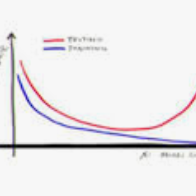Learned networks in the domain of visual recognition and cognition impress in part because even though they are trained with datasets many orders of magnitude smaller than the full population of possible images, they exhibit sufficient generalization to be applicable to new and previously unseen data. Although many have examined issues regarding generalization from several perspectives, we wondered If a network is trained with a biased dataset that misses particular samples corresponding to some defining domain attribute, can it generalize to the full domain from which that training dataset was extracted? It is certainly true that in vision, no current training set fully captures all visual information and this may lead to Selection Bias. Here, we try a novel approach in the tradition of the Thought Experiment. We run this thought experiment on a real domain of visual objects that we can fully characterize and look at specific gaps in training data and their impact on performance requirements. Our thought experiment points to three conclusions: first, that generalization behavior is dependent on how sufficiently the particular dimensions of the domain are represented during training; second, that the utility of any generalization is completely dependent on the acceptable system error; and third, that specific visual features of objects, such as pose orientations out of the imaging plane or colours, may not be recoverable if not represented sufficiently in a training set. Any currently observed generalization in modern deep learning networks may be more the result of coincidental alignments and whose utility needs to be confirmed with respect to a system's performance specification. Our Thought Experiment Probe approach, coupled with the resulting Bias Breakdown can be very informative towards understanding the impact of biases.
翻译:在视觉识别和认知学领域积累的网络在视觉识别和认知上部分令人印象深刻,因为即使这些网络经过培训的数据集数量比全部可能的图像数量小得多,但是它们也表现出足够的概括性,足以适用于新的和先前不为人知的数据。虽然许多网络从几个角度审查了关于一般化的问题,但我们想知道,如果一个网络经过培训的有偏颇的数据集,没有某些与某些界定域属性相对应的样本,它能否概括到整个领域,从中提取培训数据集?当然,在愿景中,任何当前的培训都没有完全掌握所有视觉信息,这可能导致选择Bias。在这里,我们尝试在思想实验的传统中采用一种新颖的方法,以适用于新的和先前不为人知的数据。我们是在一个真实的视觉对象领域进行这种思想实验,我们可以充分描述和审视培训数据中的具体差距及其对业绩要求的影响。我们的研究实验得出三个结论:第一,普遍性行为取决于培训中在多大程度上代表了域的特定层面;第二,任何概括性做法的效用都完全取决于可接受的系统错误;第三,对于目标的具体的视觉性特征,如能显示的精确性直观性,那么,我们的任何方向,在图像上可能不会代表任何直观,因此任何直视性平面图像中,因此任何直视系统可能恢复任何的正正正正的正正的正正正正正正的正的正正正的正正正正正的镜。




